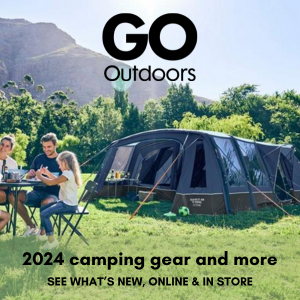CAMPING TIPS | Harnessing Solar Power for Extended Camping Trips
Guest Post
Solar power for camping is an exciting technology that’s rapidly changing the game. When it comes to powering up your outdoor adventures, there’s nothing quite like harnessing the sun to keep those essentials powered. But this shift from traditional energy sources isn’t always smooth sailing.
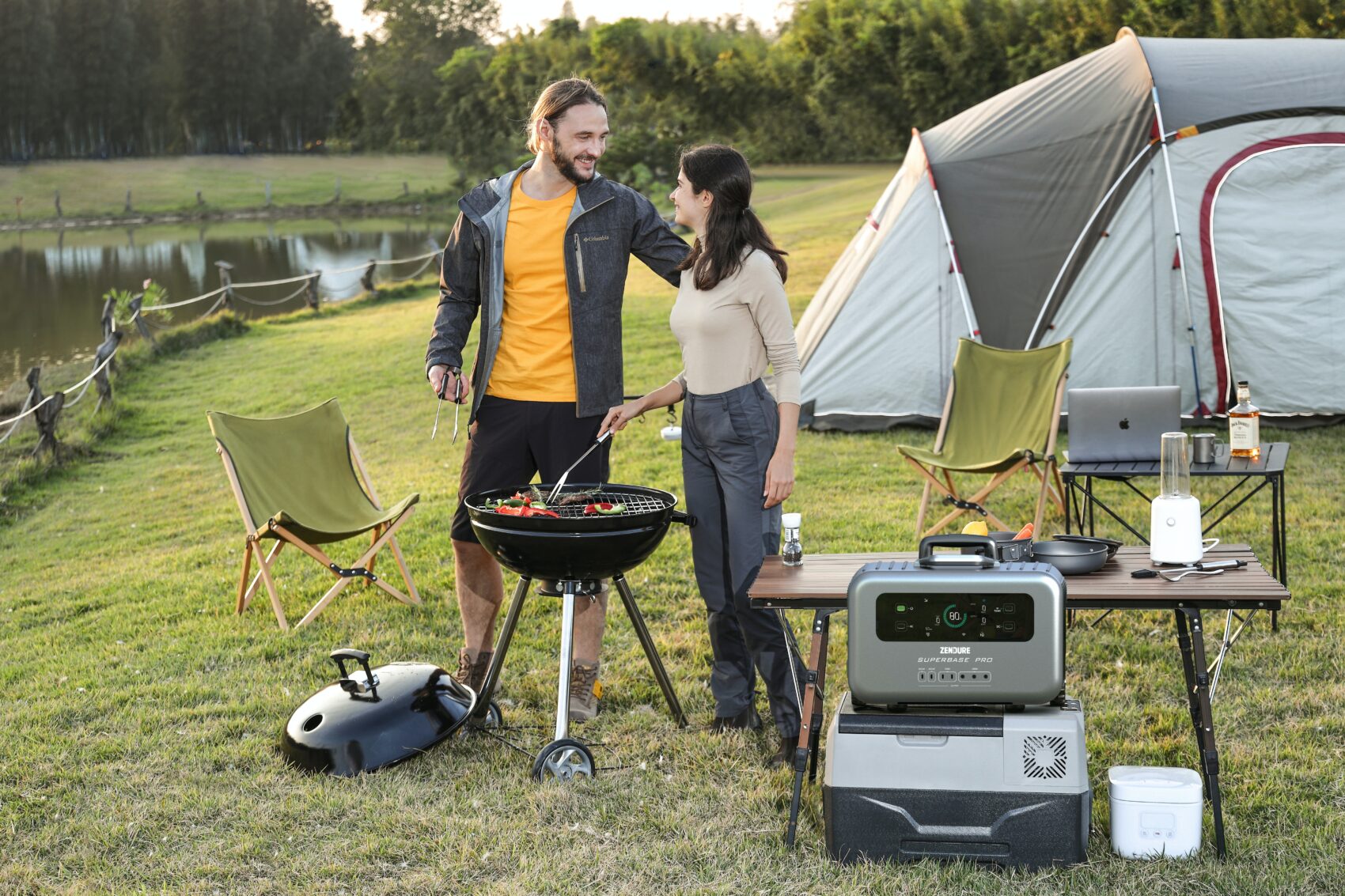
Embracing solar power while camping can feel daunting at first. Sifting through the various gadgets and tech needed to make use of solar power while camping can be overwhelming, not to mention figuring out how they function in different settings.
The transition towards solar-powered camping, however, is what separates a typical camper from a sustainable adventurer. But if you don’t know how to efficiently utilise these systems yet…you’re not alone!
Solar Power for Camping – The Essentials
When you’re camping, solar power can be your best friend. It’s the ideal way to keep your gear functioning and stay connected, even in places that are far away from civilisation.
This is not just about convenience; it’s a game-changer for off-grid living where traditional energy sources are scarce or non-existent. But there’s more than meets the eye when it comes to harnessing solar power while camping.
The Vital Role of Solar Power in Camping
Camping has evolved with technology, and today, campers have found an ally in solar power. This renewable source of energy helps us maintain our comfort levels even when we’re miles away from civilization.
Imagine being able to charge your GPS unit, mobile phone, or other essential devices without worrying about battery life—that’s what portable solar panels bring on board during outdoor adventures.
Beyond Energy Independence: More Benefits
Apart from ensuring uninterrupted access to electricity during camping trips, using portable solar panels also contributes towards reducing carbon footprint—an aspect increasingly important among environmentally-conscious campers today.
Sustainable camping practices, including using renewable energy like solar power, are now becoming mainstream.
Picking Your Portable Solar Gear
When choosing a portable solar device such as a panel or charger, its output capacity, measured in watts (W), becomes crucial.
Outdoor Direct offers guidelines on how to choose your gear based on their efficiency, size, and intended use.
- If you’re starting small—a model offering around 16x multiplication factor could suffice.
- If you need something robust that delivers up to a 30x performance boost, a mid-sized option might work better.
- For heavy-duty requirements, opt for larger models, which provide a massive multiplier value of around 52x. These are great if you anticipate needing high-energy outputs throughout your trip.
The sun, a massive power source, can be tapped right at your camping site with the help of solar panels. But which type should you choose – rigid or flexible? Let’s explore their characteristics and performance.
Rigid Solar Panels: The Classic Powerhouse
When it comes to traditional choices, rigid solar panels take the lead. Known for their superior efficiency under direct sunlight, these panels, crafted from monocrystalline silicon, offer an impressive rated power output that can fuel all your energy needs while camping.
But there’s always another side to the coin. Their weight could make you think twice if you’re constantly on the move or if space is at a premium in your gear bag.
Flexible Solar Panels: When Adaptability Meets Performance
Flexible solar panels are making waves among campers today because they check so many boxes. They’re light compared to rigid ones and fold easily around different surfaces where mounting may pose challenges otherwise.
Bonus points for being foldable too allowing you to tuck away your panel when not needed without compromising on storage space. And did we mention how efficient they are? They are comparable to conventional models under optimal conditions.
Flexible and foldable solar panels have become favorites among campers due to this blend of versatility and effectiveness. They are ideal If you value portability above everything else during camping trips but still need reliable power sources.
Maintenance Matters – Keeping Your Camping Solar Gear in Top Shape
When it comes to camping solar gear, maintenance is the secret sauce for longevity and optimal performance. Let’s delve into some practical tips on cleaning and protecting your gear.
1. The Art of Cleaning Solar Panels
Solar panels are like magnets for dust, dirt, and even bird droppings – all villains that reduce their efficiency. So how do you fight back? It’s simple: regular cleaning. Get yourself a soft brush or sponge with soapy water and gently remove any unwelcome guests from the surface of your panel.
Avoid harsh chemicals, though; they could damage the protective coating of your panels. And remember to rinse thoroughly after washing, then dry off completely; this helps prevent mineral deposits from forming on the surface.
2. Protecting Your Battery Storage System
Your battery storage system is like the heart pumping life into your camping solar setup – crucial yet vulnerable to extreme weather conditions when not in use. Here, we have put together some insights on proper battery storage, including using waterproof cases as shields against unfriendly elements.
Bear in mind, too, that room temperature is a friendlier environment than high heat or freezing temperatures, which can drastically shorten their lifespan.
3. Prolonging The Life Of Portable Solar Chargers
Portable solar chargers: They’re handy little buddies providing a constant power supply during outdoor adventures, but excessive heat exposure may cause them to harm over time, so try avoiding placing them under direct sunlight for long periods.
If yours is foldable, follow the manufacturer’s instructions while folding it up carefully, whereas rigid ones should be given a protective casing when transported or stored away. Always disconnect all devices before storing away your charger—better safe than sorry.
4. Safeguarding Cables And Connectors
Don’t overlook cables and connectors, the unsung heroes linking our solar equipment together. Regular checks for frayed wires or loose connections are key. Neglecting this could hurt your system’s performance.
Conclusion
Harnessing solar power for camping can be a game-changer. The options are diverse, from traditional rigid panels to flexible ones that adapt with ease. You’ve seen how brands like Jackery have revolutionized portable power stations.
Choosing the right panel is no longer daunting – you know what factors to consider now. Setting up your own system isn’t rocket science anymore; it’s all about placement and angle. Maintenance? You’ve got this covered too!
Solar energy not only makes your camping trips more convenient but also contributes to off-grid living and energy independence.
Shop related products
Where to next?
- GEAR | The UGreen PowerRoam 600W Is A Powerful & Capable Portable Power Station
- GEAR | Anker 555 Portable Power Station Review
- GEAR | Incredible Value Powerness Hiker U500 Power Station & Solar Panel Are The Perfect Camping Companions – Review
- GEAR | Bluetti Poweroak EB70 716Wh Portable Power Station For Camping Review
- WELLBEING | Witches Whispers From Routin Brig Waterfall, Scotland - April 25, 2024
- TRAVEL | The Little Coffee Bag Co. Delicious Coffee On The Go – Review - April 16, 2024
- NEWS | Easy Glamping With Easy Camp New Moonlight Spire Tipi Tent - April 15, 2024











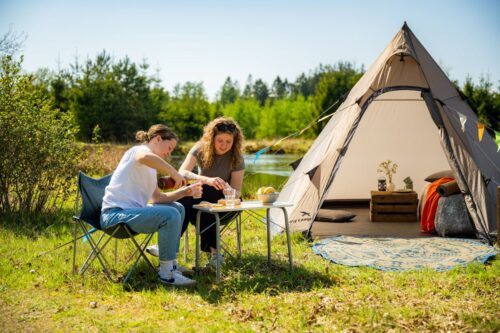




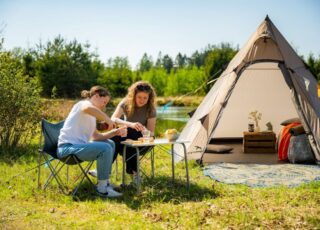

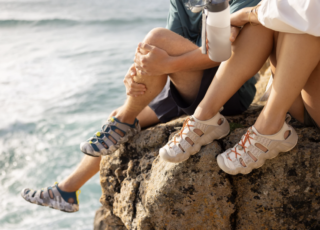

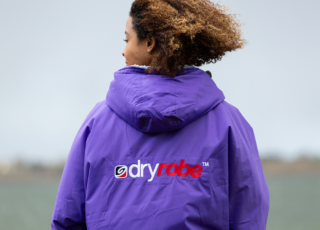
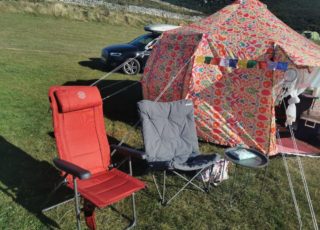
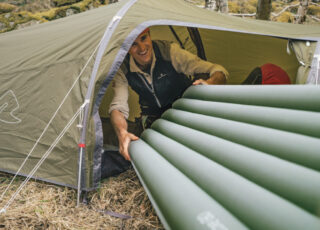
![CAMPING | Here’s How To Stay Warm In Your Tent – Warm Camping Tips [Updated 2024]](https://www.campingwithstyle.co.uk/wp-content/uploads/2024/02/shell0816_photorealistic_realistic_photo_of_the_inside_of_a_c_dd26c3c4-c779-4081-85b0-72e66a81b03b_1-320x230.png)

![GEAR | The Best Warm Sleeping Bags For Spring Camping Trips [Updated March 2024]](https://www.campingwithstyle.co.uk/wp-content/uploads/2024/02/10-best-warm-sleeping-bags-2024-320x230.png)
